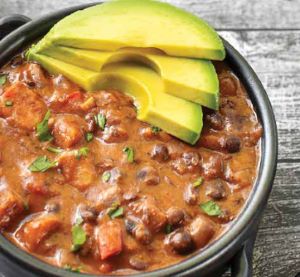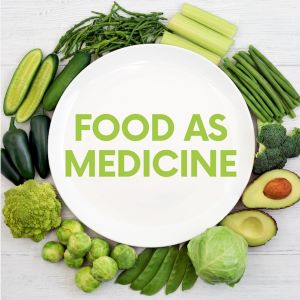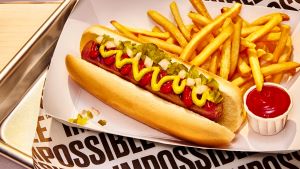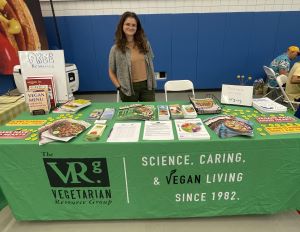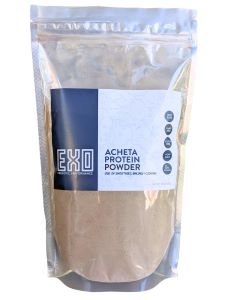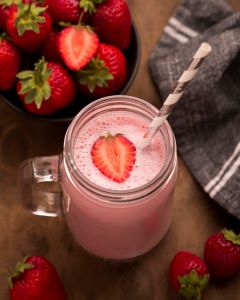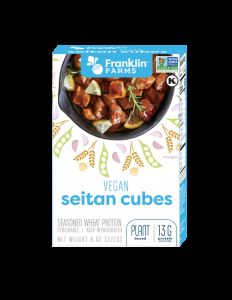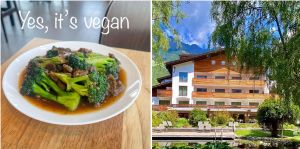Posted on
July 01, 2024 by
The VRG Blog Editor
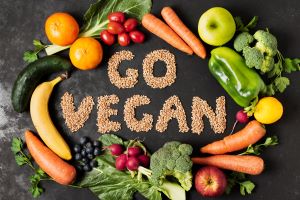
Image from Freepik
By Neha Vivek, VRG Intern
I stare at the pot in front of me, and its contents are suspiciously bland, despite the overwhelming amount of spices I had tossed in. Accepting defeat, I called my mother over and asked her to taste the pasta sauce. After taking a spoonful, she paused.
“Neha, you’re missing salt.” She reached over and added Himalayan salt, and admittedly, it solved all my tasteless problems. The process of learning to cook can feel like a daunting task, a lonely trek filled with successes and failures, but my experiences, along with other Vegetarian Resource Group interns and volunteers, have shown the role of others on a plant-based journey as well as their motivations for turning vegan.
For Priscila Reis, her friend came over and taught her how to cook vegetarian food, her first dish being vegan lasagna and a banana pie, which she shared with the neighborhood, especially with the neighbor who lent them the cake pan, allowing her to become better friends with her neighbors (who now always gives her mangoes from their yard) and share vegan dishes with others.
Similarly, for Jill, making her favorite cuisine, Thai food, has always been a flavorful and fun adventure that she can share with her nonvegan friends as well as connect with her community.
For many others, it was a love for the environment or goals of limiting animal cruelty that inspired their switch to a vegetarian and vegan diet.
For Danielle Choma, she first challenged herself to cut out meat for a week as she knew it was good for the environment and found it was easier than expected, continuing on the diet for the sake of the environment and animals.
Similar to Danielle, for Sundari Maharajh and Noelle Merveilleux, it was researching about the animal industry and learning about the ethical implications of animal exploitation that inspired their switch. To Sundari, who grew up in a vegetarian household, reading the book Dominion opened her eyes to the cruelty of how we treat animals in general, inspiring her to switch to veganism. Additionally, Noelle had wanted to follow a lifestyle without the exploitation of animals for a long time, as she wanted to see animals as autonomous beings, which is why she was motivated to go vegan in recent years.
For others, veganism was something they stumbled upon, such as Akua Oppong, who found a video by the YouTuber PickUpLimes and decided to try a dish, her first being an oatmeal recipe with peanut butter, blueberry compote, and chia seeds that she found delicious, reframing her mindset on oatmeal and how food could be transformed into amazing, versatile recipes with just plants. This allowed her to explore more recipes, prompting a two-week vegan trial similar to Danielle’s that she found herself sticking to. Since then, Akua has explored more about veganism’s nutritional benefits as a Nutrition Science major in her first two years of college.
For me, my journey was an amalgamation of all their experiences. As an eight-year-old, I decided to give up meat because I didn’t want to harm animals. However, as I got older, I got more into cooking, exploring vegan alternatives and dishes out of curiosity while also learning more about the ethical implications of how animals are treated through watching documentaries such as You Are What You Eat: A Twin Experiment as well as the environmental impact of raising livestock for meat consumption, pushing me towards a more plant-based diet.
Regardless of why you explore a plant-based diet, friends, environment, animals, or curiosity, each person’s journey is unique and should begin with excitement. So, if you need a push to begin your vegan journey (or one to keep exploring!), take this as your sign. Read a VRG article or cook a new vegan dish for yourself and have fun!
For more info for newbies, see:
https://www.vrg.org/teen/#plans
https://www.vrg.org/journal/CookingAndRecipes.htm
